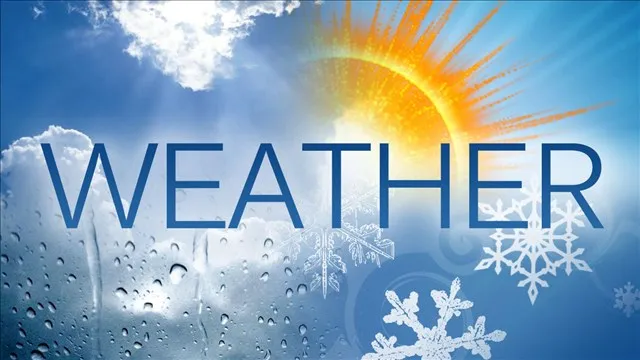
(NEW YORK) — The climate crisis is not a distant threat; it’s happening right now and affecting what matters most to us. Hurricanes intensified by a warming planet and drought-fueled wildfires are destroying our communities. Rising seas and flooding are swallowing our homes. And record-breaking heatwaves are reshaping our way of life.
The good news is we know how to turn the tide and avoid the worst possible outcomes. However, understanding what needs to be done can be confusing due to a constant stream of climate updates, scientific findings, and critical decisions that are shaping our future.
That’s why the ABC News Climate and Weather Unit is cutting through the noise by curating what you need to know to keep the people and places you care about safe. We are dedicated to providing clarity amid the chaos, giving you the facts and insights necessary to navigate the climate realities of today — and tomorrow.
Study finds use of renewable energy sources reduces risk of blackouts
The Texas freeze of 2021 knocked out power for more than 10 million people, leaving some without heat for days. In the aftermath of the storm, Texas Gov. Greg Abbott told a national news network that “Wind and solar got shut down.” He added, “They were collectively more than 10% of our power grid, and that thrust Texas into a situation where it was lacking power on a statewide basis.”
However, in the aftermath, a research study found that renewable energy sources (RES) weren’t to blame. Instead, the researchers found that Texas “failed to sufficiently winterize its electricity and gas systems after 2011.”
Other blackouts have also been blamed on RES, including the 2016 blackout in South Australia and a 2019 outage in the U.K., both of which involved disruptions to wind farms.
Now, according to a new study from The University of Tennessee, grids with higher renewable energy penetration are actually less vulnerable to blackouts than those more reliant on traditional, non-renewable sources.
The analysis found that as the proportion of renewable energy in the grid increases, the intensity of blackouts — measured by the number of affected customers and the length of outages — decreases. This finding challenges the notion that renewable energy inherently makes power grids more fragile.
The researchers analyzed over 2,000 blackouts across the U.S., looking specifically at how renewable energy levels and various weather patterns influenced outage severity. They discovered that high levels of renewables didn’t contribute to an increase in weather-related blackouts.
In grids where renewables made up more than 30% of the energy supply, blackout events were generally less intense and shorter in duration. This trend held even during extreme weather, like high winds and storms, which can place heavy demands on power systems.
-ABC News Climate Unit’s Matthew Glasser
Researchers say they’ve devised the perfect placement for EV chargers
When you buy a gas-powered car, you rarely worry about where to fill it up. That’s because gas stations are everywhere. A 2022 McKinsey survey found that more than 40% of prospective electric vehicle (EV) buyers want that same degree of convenience when it comes to public charger availability for EVs.
Engineers at Cornell University say they have devised a solution for where to place EV charging stations so they are convenient for drivers and profitable for companies.
Using Bayesian optimization, a mathematical method that efficiently analyzes complex data to achieve these results, the research team discovered that for urban areas that it’s best to install an equal percentage of medium-speed and fast chargers. And because motorists use different speed chargers for different reasons, the researchers said it is essential to consider how they are being used when placing them around town.
For example, the engineers found that fast charging is more important at grocery stores when consumers are only inside for 20 minutes. Work and home charging stations should be medium speed because drivers usually park for hours at a time at those locations.
The researchers say their approach can boost investor returns by 50% to 100% compared to random placement strategies.
The team simulated the behavior of 30,000 vehicles over 113,000 trips in the Atlanta region, considering various traffic patterns and driver decisions. This method allowed them to determine optimal charging station placements.
Yeuchen Sophia Liu, the study’s lead author, told the Cornell Chronicle that, “Placing publicly available charging stations around cities sounds like a simple thing, but mathematically, it’s actually very hard.”
She added, “Economically strategic placement of charging stations could play a pivotal role in accelerating the transition to zero-emission vehicles.”
-ABC News Climate Unit’s Matthew Glasser
Nearly 40% of the world’s trees face extinction, according to new assessment
Climate change, deforestation, invasive pests and disease all threaten to permanently wipe out nearly 40% of the earth’s trees, according to a new assessment by the International Union for the Conservation of Nature (IUCN).
The organization, comprised of 1,400 member organizations worldwide and 16,000 experts, said more than one in three tree species across 192 countries is now facing extinction, especially trees found on islands.
development and agriculture, as well as the other threats faced by tree species across the globe.
Since 1964, the IUCN has hosted its “Red List,” a database of threatened species from around the world. The research group found that 16,425 of the 47,282 tree species on their list are at risk of extinction — more than 2,000 of which are used for medicines, food, and fuels.
“Trees are essential to support life on Earth through their vital role in ecosystems, and millions of people depend upon them for their lives and livelihoods,” said Grethel Aguilar, IUCN director general, in a statement.
According to their analysis, “the number of threatened trees is more than double the number of all threatened birds, mammals, reptiles and amphibians combined.”
The group is calling for more habitat protection and restoration to protect these species and the creation of seed banks and botanical gardens to ensure they don’t disappear forever.
“The significance of the Global Tree Assessment cannot be overstated, given the importance of trees to ecosystems and people. We hope this frightening statistic of one in three trees facing extinction will incentivize urgent action and be used to inform conservation plans,” said Eimear Nic Lughadha from the Royal Botanic Gardens, in a statement.
-ABC News Climate Unit’s Matthew Glasser
Report finds climate change increased heat deaths among older adults by 167%; worsened food security
The health and economic costs of climate change are rising worldwide, according to the newly released 2024 Lancet Countdown, a yearly report hosted by University College London and involving more than 300 researchers.
According to the report, “Of the 15 indicators monitoring climate change-related health hazards, exposures, and impacts, ten reached concerning new records in their most recent year of data.”
With global communities facing an additional 50 days of “dangerous heat,” heat-related deaths among older adults increased by a record-breaking 167% in 2023 compared to the 1990s, according to the report’s findings.
In addition to the heat impact, the Lancet report found that climate change is significantly worsening food insecurity, with 151 million more people facing shortages compared to previous decades. And more than 3 million people died in 2021 because of air pollution and fine particulate matter.
The researchers also found that global extreme weather costs have increased by 23% from 2010-14 to 2019-23, amounting to $227 billion annually.
-ABC News Climate Unit’s Kelly Livingston and ABC News Medical Unit’s Sony Salzman
Copyright © 2024, ABC Audio. All rights reserved.




